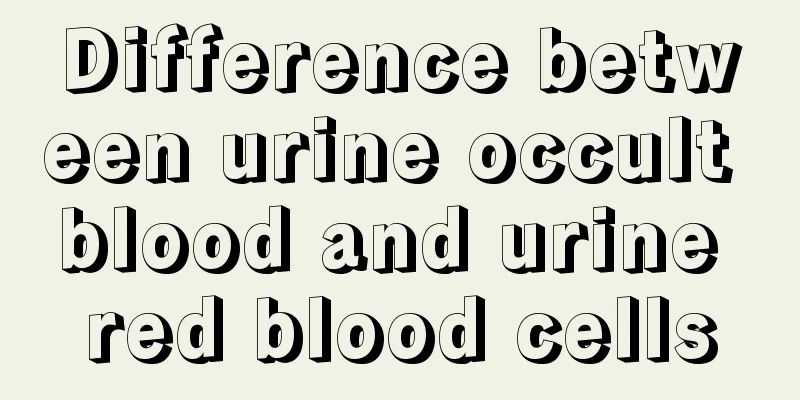Anti-human globulin test positive

|
There are a large number of cells inside the human body. Each cell has its own function and is in charge of the part it is responsible for, which is related to our physical health. Once abnormal increases or decreases in cells are found, the body's resistance will often decrease and the possibility of developing related diseases will also increase. In the medical field, the anti-human globulin test is often used to detect the red blood cell content in the human body. So what happens when the anti-human globulin test is positive? The antiglobulin test is also called Coomb's test. It is a classic method for detecting incomplete antibodies in red blood cells. Incomplete antibodies are mostly IgG antibodies, which can bind to the corresponding antigens. However, since they can only bind to the determinant clusters of one red blood cell antigen and cannot simultaneously connect to the determinant clusters of both red blood cell antigens, no visible reaction occurs under normal conditions. Anti-human globulin antibody acts as a second antibody to bridge the specific antibody bound to the red blood cell antigen and cause the red blood cells to agglutinate. Antiglobulin tests can be divided into direct tests and indirect tests. The purpose of direct tests is to detect incomplete antibodies on the surface of red blood cells. The positive results of this test are mainly seen in the following situations: 1. Autoimmune anemia, hemolytic anemia caused by (IgG) type. The direct reaction of this test is often strongly positive, and the indirect reaction is mostly negative, but it can also be positive. 2. Drug-induced immune hemolytic anemia ①α-Methyldopa type: Both direct and indirect reactions are positive. ② Penicillin type: direct reaction is positive, indirect reaction is negative. If the above two types are incubated with normal red blood cells and related drugs at 37°C and then the patient's serum is added, the indirect reaction is positive. ③Fuorine type: (quinine and other drugs) The antibody is usually IgM, occasionally IgG type. The direct reaction is positive and the indirect reaction is negative. However, if IgG antiserum is used as a reagent, most of the results are negative. However, if fresh normal human serum (supplying complement) is added during the incubation, the result will be positive. 3. Cold agglutinin syndrome has a positive direct reaction and a negative indirect reaction (the test needs to be performed at 37°C). Since the complement C4 and C3 rather than IgG or IgM are attached to the red blood cell membrane of this disease, if anti-IgG or anti-IgM antiserum is used for the test, the result will be negative. If anti-complement antiserum is used for the test, the direct reaction will be positive. 4. Neonatal alloimmune hemolytic disease, hemolytic disease caused by Rh blood type incompatibility, both direct and indirect reactions are strongly positive, lasting for several weeks, and may become negative within a few days after exchange blood transfusion. Hemolytic disease caused by "ABO" blood type incompatibility is often negative or weakly positive. 5. Transfusion reaction caused by red blood cell incompatibility. In ABO or Rh incompatible blood transfusion, the donor's red blood cells are sensitized by the recipient's blood type antibodies. Before the donor's sensitized red blood cells are completely destroyed, the direct reaction is positive. If an Rh-negative person has never received blood from an Rh-positive person in the past or has been pregnant with an Rh-positive fetus, the indirect reaction will be positive. If there is no such contact, the indirect reaction will become positive within a few days after the first blood transfusion (Rh-positive blood). 6. In other cases, direct reactions of patients may be positive, such as in infectious mononucleosis, SLE, malignant lymphoma, chronic lymphocytic leukemia, cancer, lead poisoning, periarteritis nodosa, and Evan's syndrome. In patients with paroxysmal cold hemoglobinuria, direct reactions of anti-complement serum tests after acute attacks are often positive. |
<<: The order of blood flow direction in the heart
>>: Neutrophil esterase positive
Recommend
Thyroid cancer patients should not worry, standardized treatment will prolong their lifespan
Many thyroid cancer patients do not want to go to...
What are the symptoms of a bug in the ear?
There are often some very tiny insects in our liv...
What is food grade pp material
PP material is a very common plastic. It can be u...
At what age can a baby drink milk without a pacifier
When babies are young, they absorb nutrition by d...
Anti-dandruff shampoo
If you want to remove dandruff, you must choose a...
Does peach gum contain collagen?
Collagen can better help us beautify and make our...
I have a dull pain and distension under my right ribs. What's going on?
Nowadays, most people fail to seek timely check-u...
Why does my waist hurt so much that I can’t stand up straight?
Many people will face the pain of having a bad wa...
How long will the pain last after anal fistula surgery
When a disease occurs in the body, it will have a...
A natural horn comb?
The ox horn comb is actually a comb made of ox ho...
What are eye bags
When it comes to the question of what are eye bag...
Why can't I get better with my cough
Coughing is a common symptom. Because it is relat...
What are the symptoms before death in the late stage of bile duct cancer? Here are some points to note
Patients with advanced cholangiocarcinoma may exp...
The effect of Ganoderma lucidum on tumors
Ganoderma lucidum has been widely known as a magi...
How often should I wash my powder puff
Everyone knows the importance of makeup. An exqui...









